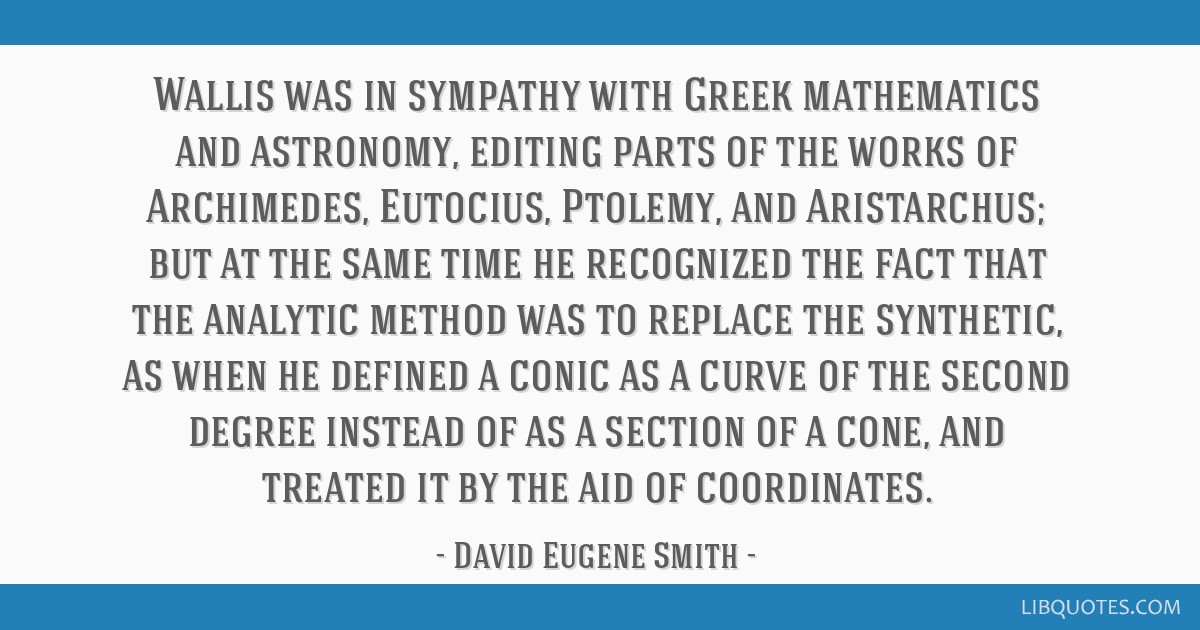Wallis was in sympathy with Greek mathematics and astronomy, editing parts of the works of Archimedes, Eutocius, Ptolemy, and Aristarchus; but at the same time he recognized the fact that the analytic method was to replace the synthetic, as when he defined a conic as a curve of the second degree instead of as a section of a cone, and treated it by the aid of coordinates.
History of Mathematics (1923) Vol.1























